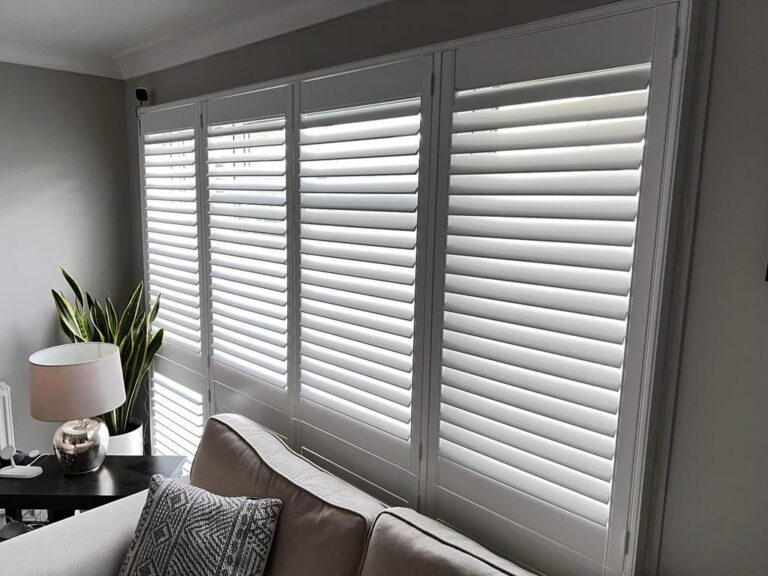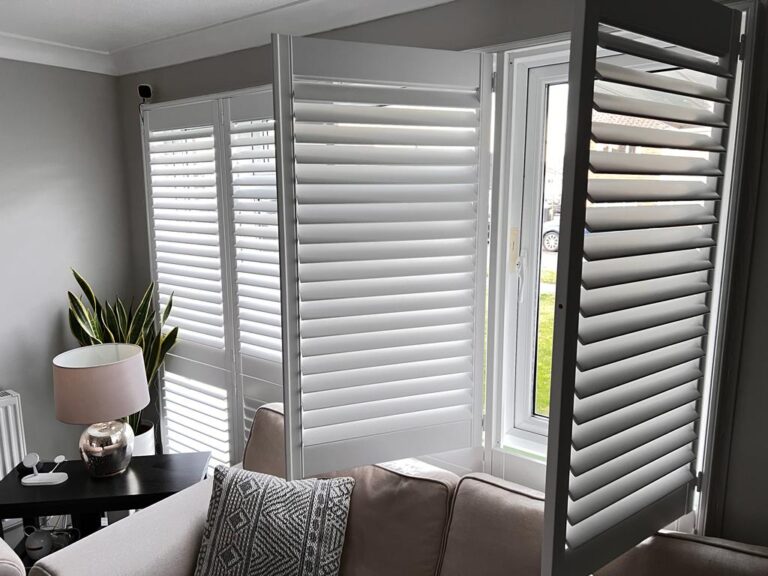
Plantation Shutters vs. Traditional Shutters: Which One is Right for You?
When it comes to window treatments, shutters are a popular choice due to their versatility and durability. However, choosing between plantation shutters and traditional shutters can be confusing. Both offer a classic look and excellent light control, but they have their differences. In this article, we’ll take a closer look at plantation shutters vs. traditional shutters to help you decide which one is the right choice for your home.
Table of Contents
- Introduction
- What are Plantation Shutters?
- What are Traditional Shutters?
- Appearance
- Materials
- Louver Size
- Installation
- Light Control
- Energy Efficiency
- Durability
- Cost
- Maintenance
- Noise Reduction
- Privacy
- Conclusion
- FAQs
1. Introduction
Shutters are a great addition to any home. They not only provide excellent light control and privacy, but they also enhance the appearance of your windows. Plantation shutters and traditional shutters are two popular options. While they may look similar, they have some key differences. In this article, we’ll compare plantation shutters vs. traditional shutters to help you make an informed decision.
2. What are Plantation Shutters?
Plantation shutters have wider louvers than traditional shutters, usually 2 1/2 to 4 1/2 inches wide. They originated in the southern United States and were commonly used on plantation homes, hence the name. Plantation shutters are often made of wood or faux wood, although they can also be made of vinyl or composite materials.
3. What are Traditional Shutters?
Traditional shutters, also known as colonial shutters, have smaller louvers than plantation shutters, typically 1 1/4 to 2 1/2 inches wide. They are often made of wood and were popular in colonial times. Traditional shutters can be louvered or solid.
4. Appearance
Both plantation shutters and traditional shutters offer a classic look, but they have different styles. Plantation shutters have wider louvers that provide a more modern, open look. Traditional shutters, on the other hand, have smaller louvers that give a more traditional, historical appearance. Both styles come in a variety of colors and finishes to complement your home’s decor.
5. Materials
Plantation shutters are typically made of wood, faux wood, vinyl, or composite materials. Wood shutters are the most traditional and offer a classic look. Faux wood shutters are more affordable and can withstand moisture better than wood. Vinyl shutters are low-maintenance and moisture-resistant. Composite shutters are made of a mix of materials and offer excellent durability.
Traditional shutters are typically made of wood, but they can also be made of vinyl or composite materials. Wood shutters offer the most traditional look, while vinyl and composite shutters are low-maintenance and moisture-resistant.
6. Louver Size
The louvers on plantation shutters are wider than traditional shutters. This means that plantation shutters allow more light in when the louvers are open, but they also provide less privacy. Traditional shutters have smaller louvers, so they allow less light in when the louvers are open, but they provide more privacy.
7. Installation
Both plantation shutters and traditional shutters can be installed inside or outside of the window frame. Inside mount installation provides a cleaner look, while outside mount installation can make the window appear larger. Plantation shutters are often installed with a frame, while traditional shutters can be installed with either a frame or without. The installation process for both types of shutters is similar and usually requires professional installation.
8. Light Control
Both plantation shutters and traditional shutters offer excellent light control. The wider louvers on plantation shutters allow more light in when they are open, while the smaller louvers on traditional shutters provide less light when they are open. Both types of shutters can be adjusted to control the amount of light that enters the room.
9. Energy Efficiency
Both plantation shutters and traditional shutters can improve the energy efficiency of your home. When closed, they create an insulating barrier that can help to keep your home cool in the summer and warm in the winter. Plantation shutters are often more effective at blocking out sunlight, which can help to reduce cooling costs in the summer.
10. Durability
Both plantation shutters and traditional shutters are durable and long-lasting. However, the durability can depend on the materials used to make them. Wood shutters are more susceptible to moisture damage, while vinyl and composite shutters are more durable and resistant to moisture. Plantation shutters with wider louvers may be more prone to damage if they are accidentally bumped or knocked.
11. Cost
The cost of plantation shutters vs. traditional shutters can vary depending on the materials used and the size of the windows. Plantation shutters tend to be more expensive than traditional shutters due to their wider louvers and larger size. Wood shutters are typically more expensive than vinyl or composite shutters.
12. Maintenance
Both plantation shutters and traditional shutters are low-maintenance. They can be easily cleaned with a damp cloth and do not require regular painting or staining. However, wood shutters may require more maintenance to prevent moisture damage.
13. Noise Reduction
Both plantation shutters and traditional shutters can help to reduce noise levels inside your home. When closed, they create a barrier that can help to muffle outside noise. Plantation shutters may be more effective at reducing noise levels due to their wider louvers.
14. Privacy
Both plantation shutters and traditional shutters provide excellent privacy. However, the size of the louvers can affect the level of privacy provided. Plantation shutters with wider louvers provide less privacy when the louvers are open, while traditional shutters with smaller louvers provide more privacy when the louvers are closed.
15. Conclusion
When choosing between plantation shutters vs. traditional shutters, it’s important to consider your individual needs and preferences. Plantation shutters offer a more modern, open look with wider louvers, while traditional shutters offer a more traditional, historical appearance with smaller louvers. Both types of shutters offer excellent light control, energy efficiency, and privacy. The decision ultimately comes down to personal style, budget, and specific needs.
16. FAQs
- Are plantation shutters more expensive than traditional shutters?
- What materials are plantation shutters and traditional shutters made of?
- Can plantation shutters and traditional shutters be installed inside or outside of the window frame?
- Do plantation shutters provide more light control than traditional shutters?
- Do plantation shutters or traditional shutters require more maintenance?
1. Yes, plantation shutters tend to be more expensive than traditional shutters due to their wider louvers and larger size.
2. Plantation shutters and traditional shutters can be made of wood, faux wood, vinyl, or composite materials.
3. Both plantation shutters and traditional shutters can be installed inside or outside of the window frame.
4. Plantation shutters allow more light in when the louvers are open due to their wider size, while traditional shutters provide less light when the louvers are open.
5. Both plantation shutters and traditional shutters are low-maintenance and can be easily cleaned with a damp cloth. However, wood shutters may require more maintenance to prevent moisture damage.
In summary, choosing between plantation shutters and traditional shutters comes down to personal style, budget, and specific needs. Both types of shutters offer excellent light control, energy efficiency, and privacy, but they have their differences in appearance, materials, louvers size, installation, durability, cost, maintenance, noise reduction, and privacy. Consider these factors carefully before making a decision, and consult with a professional if you have any questions or concern
